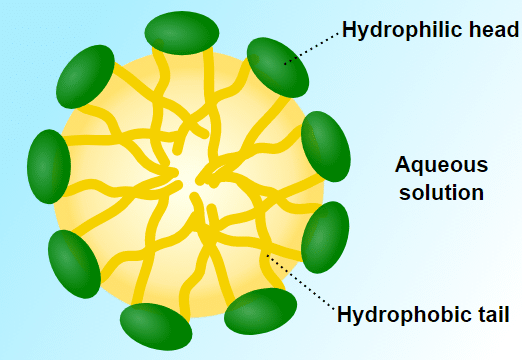One of the most exciting things about the cannabis industry today is that credible scientists and researchers have begun bridging the gap between basic research and practical application.
The limitations of native cannabinoid bio availability have already been demonstrated [1], and a need has been identified for fast-acting, water-soluble cannabinoid solutions that produce reliable pharmacodynamic dosing. That’s where ebbu’s HydroPS system comes in.
Not a lot of technical information is available on HydroPS specifically. But to the best of our knowledge, ebbu, a Colorado-based cannabis technology company, has created their water-soluble cannabinoid delivery system by taking advantage of a type of science called colloid chemistry, whose main purview is the study of nano-emulsions.
We all use emulsifiers in our everyday lives. Detergents of all kinds, like soaps, shampoos, or windshield wiper fluid, act by solubilizing compounds in water that are not normally water-soluble, such as grease, fats, and other hydrophobic compounds. But how is this done?
Micelles, as shown above, are formed when a sufficiently high concentration of an amphiphilic molecule exists in a typically hydrophilic solution (such as water). The key features of these molecules are that they contain both water-loving hydrophilic (usually shaped like a bead, or “head”) and water-repelling hydrophobic (usually a long “tail”) ends.
The main driving force in micelle formation is the hydrophobic effect, which pushes the water-repelling “tails” of the amphiphilic molecules together and packs them inside a hydrophobic core, forming a hydrophilic exterior. The formation is energetically and entropically unfavorable, so usually mechanical agitations (or ultrasonic sound waves [2]) are required to achieve full micelle formation. And when you key in the details, the micelles can directly incorporate—and make entirely soluble—compounds that would normally not suspend in water. Like cannabinoids.
A recent patent filing suggests that particles as low as 50 nm in diameter are achievable for cannabinoid colloidal suspensions. [3] The smaller the particle, the easier time it has crossing into the body, be it through the skin, mucus, or gut. It is therefore reasonable to assume that ebbu was able to further target down this method and produce a truly fast-acting emulsion.
References
- Gallily, Ruth, et al., “Overcoming the Bell‐ShapedDose‐Response of Cannabidiol by Using Cannabis Extract Enriched in Cannabidiol”, Pharmacology & Pharmacy, 2015, 6, 75‐
- Jafari, S.M., et al., “Nano-Emulsion Production By Sonication AndMicrofluidization—A Comparison”,International Journal of Food Properties, 2006, 9: 475–485.
- Robert Winnicki, Full Spectrum Laboratories Limited, Dublin (IE). Cannabinoid Formulations. Patent No. US 8,808,734, Aug. 19th












